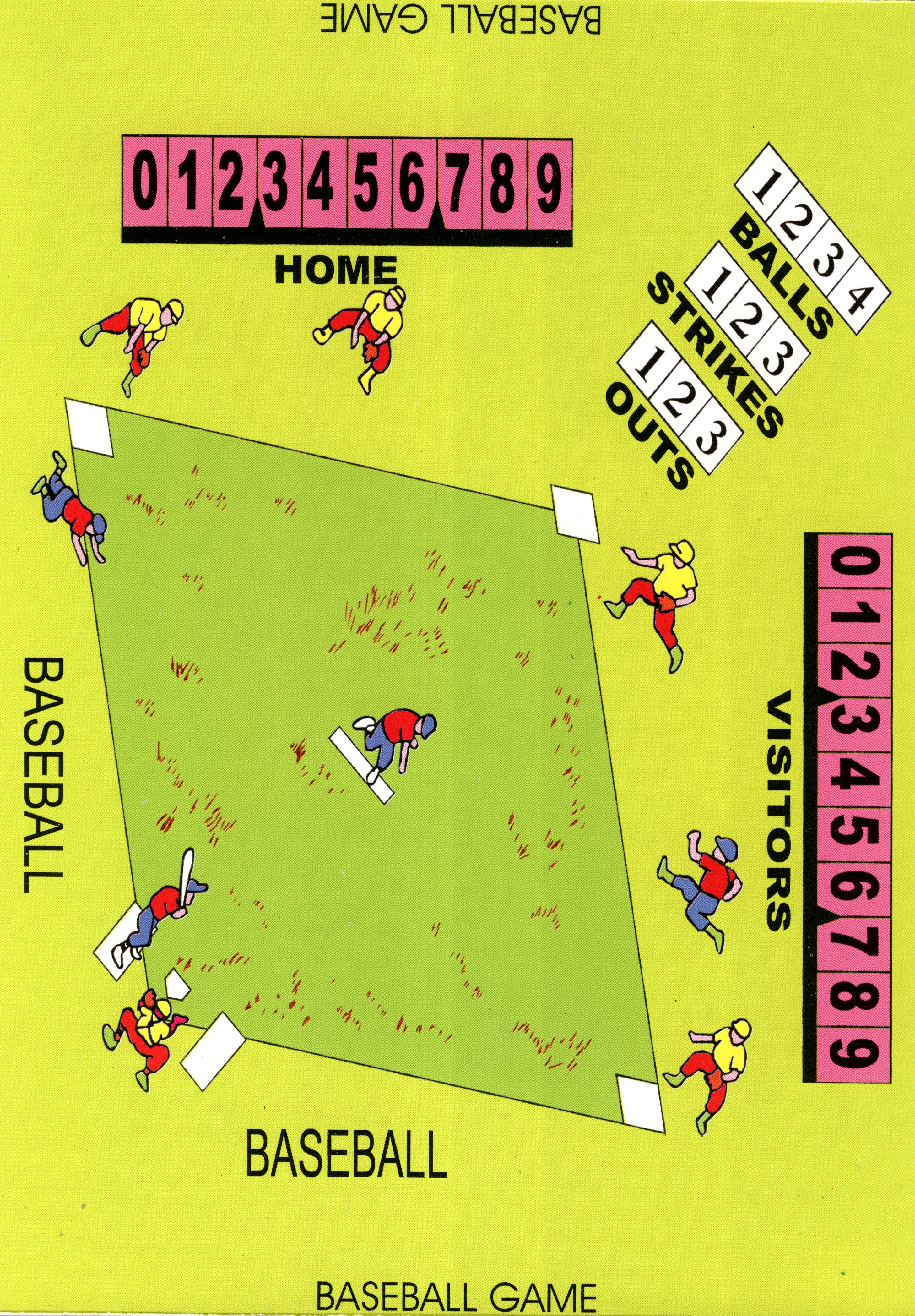
One, Two and Three dice Baseball
Jeux
Dice Game
ONE-DIE BASEBALL
Players: 2.
Required: 1 dice.
How to play: The players throw the dice to decide
who should bat first (i.e., shoot the dice first). Each player in turn then
throws a half-inning.
A half-inning is ended when a player has thrown
three outs (see below).
Value of the throws:
At the start of the game, or whenever all bases are empty, a throw of 1, 2 or 3 permits the player to put a man (counter) on which ever of the three bases they have thrown.
A player may have only one man on a base at a time. If they throw 1, 2, or 3 again, this permits the player to move their man around the diamond by the number of bases thrown, and to place another man on the base that bears the number thrown.
For example, if the player has a man on 1, and throws a 2, the man advances to base 3(1+2) and a new man is entered on base 2.
Each time a man reaches home plate, a run is scored. A single throw may give a score of more than one run, if it results in more than one man reaching home base.
(The rule against more than one man on a base does not apply to home plate.)
For example, if a player with men on bases 2 and 3 throws a 2, both men advance to home base and two runs are scored.
At the same time a new man is entered on base 2. A throw of 4 counts as a
home run, and advances all men on the bases to home base. The score is thus the
home run plus one run for each man brought home.
Outs
Throws of 5 or 6 are outs.
A throw of 5 is as though there had been a hit
and a throw-in, so that men on the bases may also be out, as follows:
a)
If the player has only one man on the bases, he is out
b) If he has men on
all bases, the man on base 1 is out
c) If he has men on bases 1 and 2, the
man on base 2 is out
d) If he has men on bases 1 and 3, the man on base 1 is
out
e) If he has men on bases 2 and 3, both are safe
Men on the bases,
who are not out, remain where they are.
A throw of 6 is also an out, but it is as if the batter was out without striking the ball; men on bases are safe, and remain where they are.
Note that three outs ends a half-inning. The other player then throws their half-inning, to complete the inning.
TWO-DICE BASEBALL
Two-Dice Baseball is similar to the one-die
game, but the dice scores count as follows:
Any 12 or 2 is a home run.
Any 4 or 10 is a one, any 11 a two, any 3 a
three.
With these, all men already on bases advance the appropriate number of bases, and a new man is entered on the appropriate base.
Any 6 or 9 is an out, and the men on bases do not move.
Any 8 is an out, except for double 4 (4 + 4), which is a walk.
On a
walk, a new man is entered on first base, and other basemen advance only if they
are forced on by him.
Any 5 is an out, but basemen advance one base each (sacrifice).
Any 7 is an out, and, if there are any basemen, one of them is also out.
When there is more than one baseman, it is the one nearest home base; the
others do not move.
THREE-DICE BASEBALL
Three-Dice Baseball
is the simplest version of baseball dice.
Each player throws the dice in turn, scoring one run for every 1 that is
rolled.
When a player fails to throw a 1, the player's half-inning is
ended, and their opponent takes over.
The game consists of the usual nine innings, with extra innings to decide any tie.
As a dice game, Baseball is usually played by two players, but more can take part, each player representing a team.
As in the real game, the winner is the team (i.e., player), making the highest score in the game or series of games.

